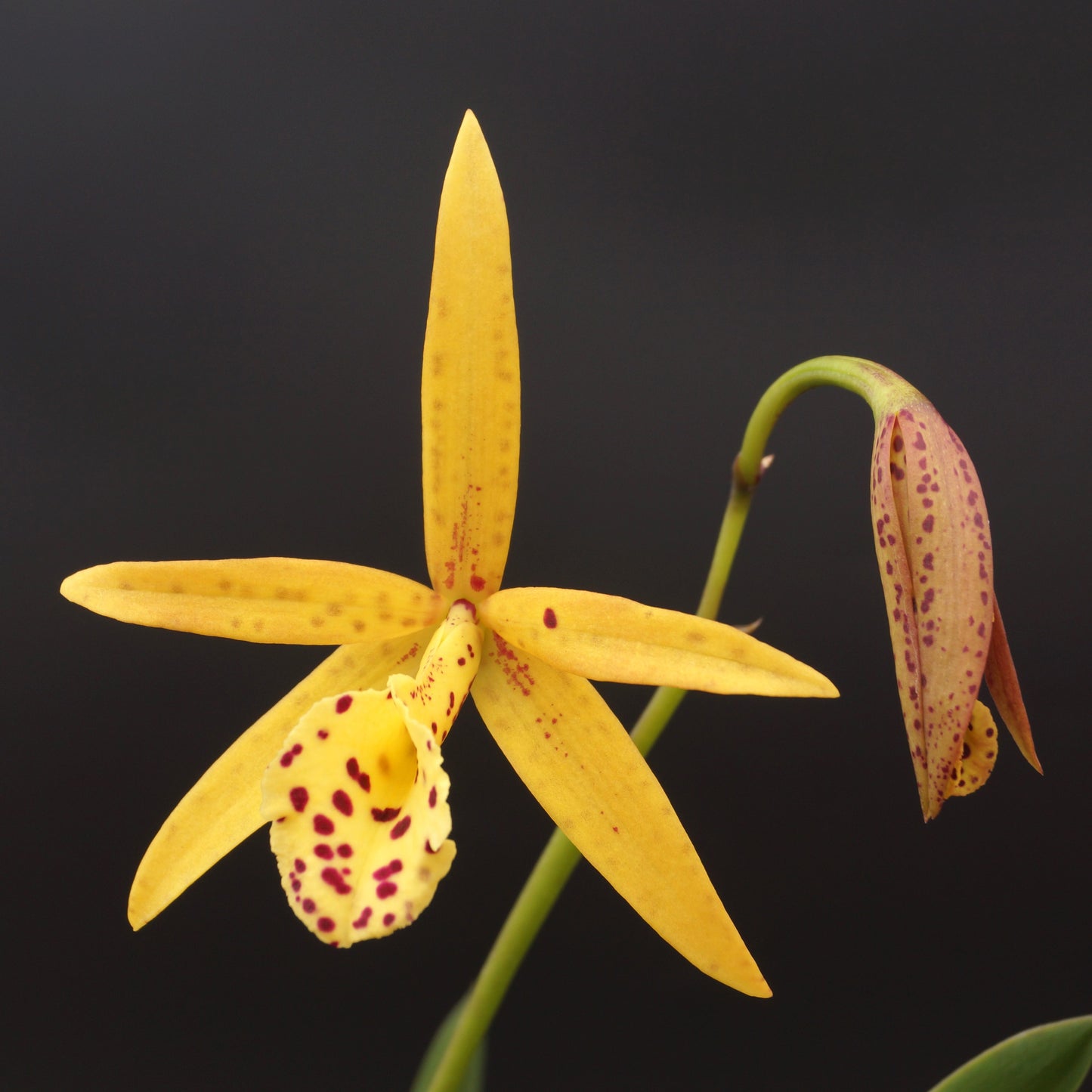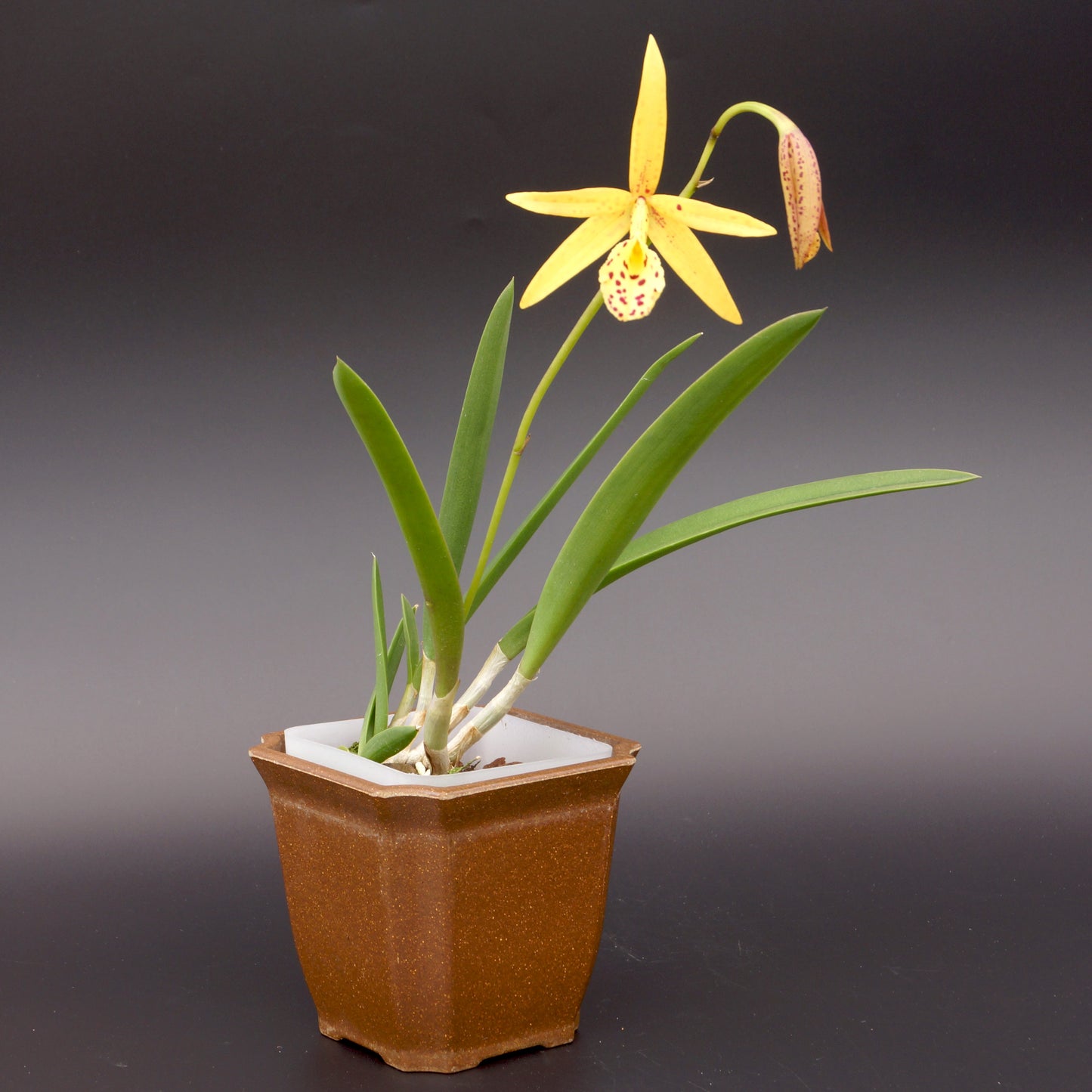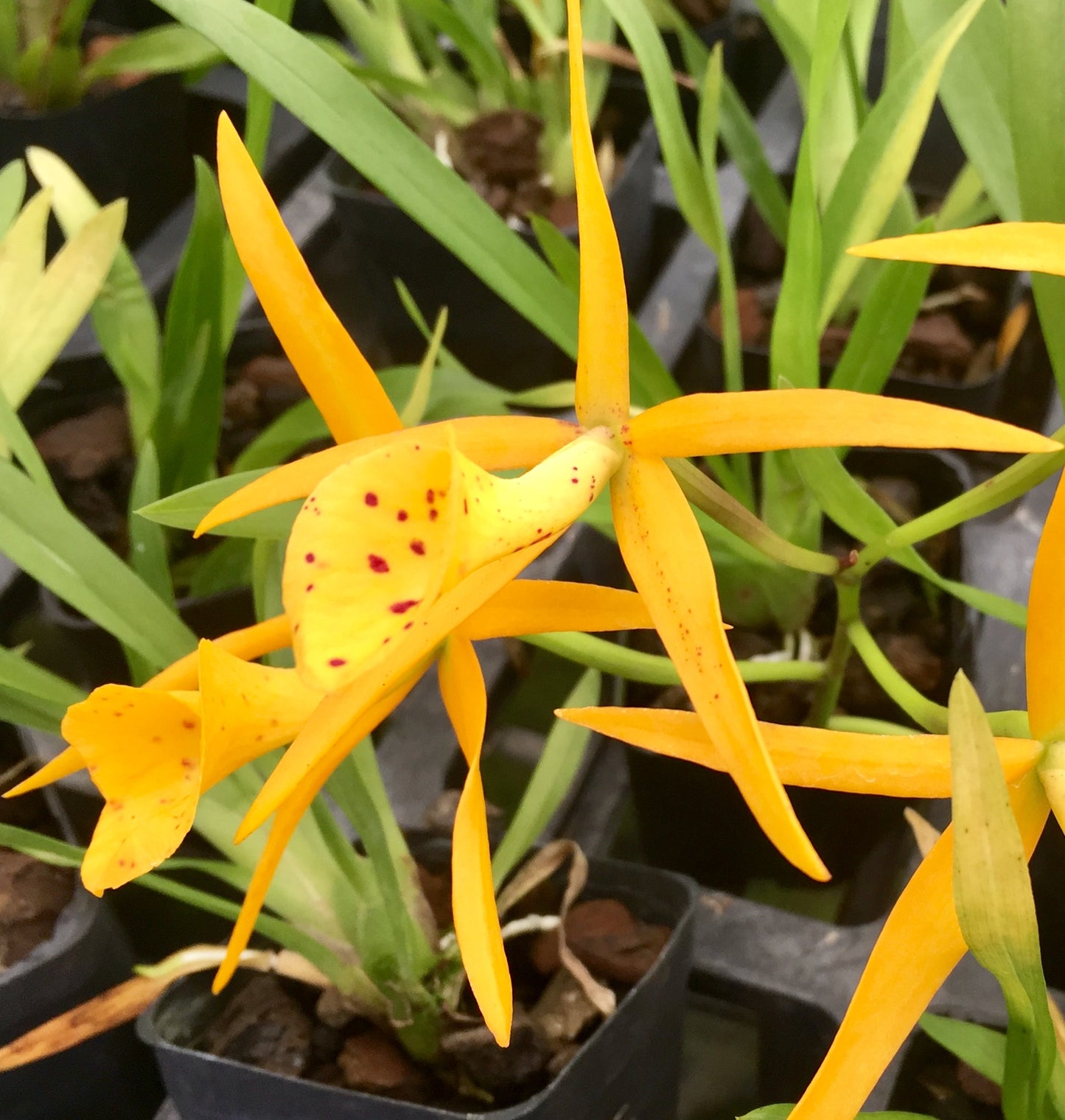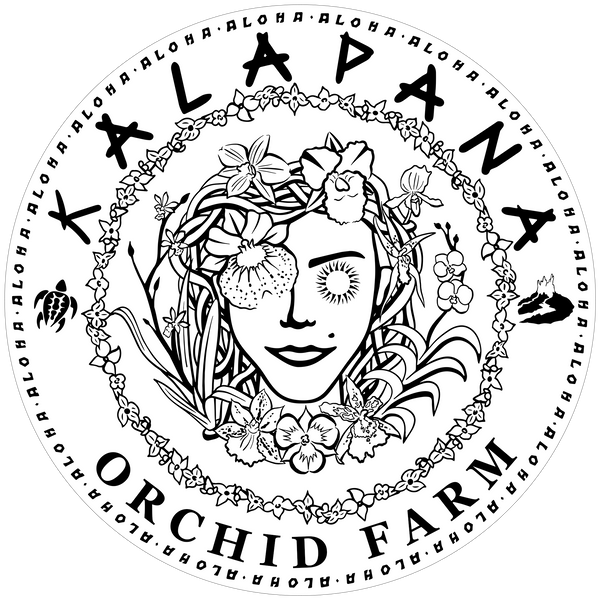Kalapana Orchid Farm
Bc. Yellow Bird
Bc. Yellow Bird
Couldn't load pickup availability
Brassocattleya Yellow Bird is a fantastic example of what happens when you cross two robust species to create something truly special.
The parentage is a story in itself. It is a cross between Brassavola nodosa and Cattleya Richard Mueller. Digging one generation deeper, Cattleya Richard Mueller is a cross of Cattleya milleri and Brassavola nodosa. This means that Bc. Yellow Bird is 75% B. nodosa and 25% C. milleri, a genetic makeup that heavily influences its appearance and resilience.
Its primary parent, Brassavola nodosa, hails from the low-elevation coastal regions of Mexico down through Central America to Colombia. It's often found growing as an epiphyte on trees, particularly on the rough bark of mangrove roots, where it gets drenched by rains and then dries quickly in the sea breeze. It's a true warm-growing survivor. The other grandparent, Cattleya milleri, is quite the opposite. It’s a rupicolous (rock-dwelling) orchid from the iron-rich mountains of Minas Gerais, Brazil, growing at elevations around 4,000 ft. This combination of a low-land coastal dweller and a high-elevation rock specialist gives Bc. Yellow Bird its remarkable adaptability.
The flowers are the main event. They are distinctly star-shaped, a trait passed down from the narrow petals and sepals of the B. nodosa parent. Each flower, typically 3-4 in. across, is a brilliant, clear canary yellow. The large, spade-shaped lip, which serves as a welcoming landing pad for pollinators, is often decorated with a delicate sprinkling of fine red spots, a beautiful inheritance from the C. milleri grandparent. But perhaps its most famous attribute is its powerful fragrance. True to its "Lady of the Night" heritage from B. nodosa, this orchid releases a strong, sweet, citrus-like perfume only after dusk to attract its nocturnal moth pollinators. Many clones have been recognized by the American Orchid Society for their superior quality, such as the famous Bc. Yellow Bird 'Golden Gallop', AM/AOS.
Botanically, the plant itself leans heavily towards its Brassavola parentage. It has a sympodial growth habit with slender, pencil-like pseudobulbs. Each pseudobulb is topped with a single, fleshy, semi-terete leaf. These succulent leaves are an excellent adaptation for water storage, allowing the plant to tolerate periods of dryness. It is a frequent and reliable bloomer, often flowering multiple times throughout the year.
Care Instructions
Light: High light is essential. It thrives in conditions suitable for Cattleyas, appreciating bright, indirect light. It can tolerate some direct morning sun.
Water: Water thoroughly and then allow the medium to dry out completely before watering again. This plant is intolerant of constantly wet roots. When in doubt, wait a day.
Temperature: An intermediate to warm grower, it is quite tolerant of a range of temperatures. It performs well with daytime temperatures between 70−90∘F and nighttime lows between 60−65∘F.
Humidity: Prefers humidity levels of 50-70%. Good air circulation is crucial to prevent fungal issues.
Potting Medium: Due to its epiphytic and lithophytic ancestry, it demands a very coarse, well-draining medium. Large-grade fir bark, lava rock, charcoal, or a combination thereof works well. It also grows exceptionally well when mounted on cork bark or a tree fern plaque, which best mimics its natural growing habit.
Offered in 4" pots.
Share






